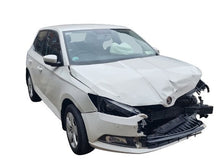
The Revolutionary Impact of 3D Printing on Car Parts Production
In recent years, 3D printing has emerged as a game-changer for various industries, and the automotive sector is no exception. As car manufacturers seek more efficient and sustainable production methods, 3D printing technology stands out for its ability to streamline processes, reduce costs, and foster creative designs. In this blog, we will explore the profound impact of 3D printing on the production of car parts, examining its benefits, challenges, and future potential.
Understanding 3D Printing Technology
3D printing, or additive manufacturing, involves creating three-dimensional objects layer by layer from a digital model. This process utilizes various materials such as plastics, metals, and composites. The technology has evolved significantly, with advancements like selective laser sintering (SLS), fused deposition modeling (FDM), and laminated object manufacturing (LOM) driving its rapid adoption across many sectors.
The Rise of 3D Printing in the Automotive Industry
Automakers have started leveraging 3D printing technology to enhance their manufacturing capabilities. From prototyping to producing end-use components, 3D printing has allowed the automotive industry to rethink traditional manufacturing methodologies. Renowned companies such as Ford, BMW, and General Motors have embraced this innovation, leading to breakthroughs that are altering the landscape of car parts production.
Key Benefits of 3D Printing Car Parts
The advantages of 3D printing in automotive manufacturing are significant, offering several enhancements over conventional processes, such as:
- Cost Reduction: Traditional manufacturing involves high costs related to tooling, molds, and waste material. With 3D printing, production becomes more efficient as parts can be made directly from a digital design, eliminating the need for expensive tooling.
- Customization: One of the most exciting features of 3D printing is the ability to create customized parts tailored to specific applications. This level of personalization allows manufacturers to cater to individual customer preferences, enhancing overall satisfaction.
- Speed of Production: 3D printing drastically reduces lead times from design to production. With quicker prototyping and the ability to print parts on-demand, manufacturers can accelerate their development cycles, getting products to market more rapidly.
- Reduced Waste: Traditional subtractive manufacturing methods often result in substantial material waste. In contrast, 3D printing is an additive process that uses only the materials necessary to create the part, making it an environmentally friendly option.
- Complex Geometries: 3D printing allows for the creation of intricate and complex designs that would be impossible or cost-prohibitive to achieve with traditional manufacturing. This capability enables the advancement of lightweight and high-performance components that enhance vehicle efficiency.
The Role of Prototyping and Testing
Rapid prototyping is one of the most significant applications of 3D printing in the automotive market. By utilizing 3D printed prototypes, engineers can quickly test various designs and functionalities without committing large resources to physical manufacturing. This iterative process enhances innovation, allowing teams to identify potential problems and refine designs before mass production.
Faster Design Iterations
The speed at which engineers can produce a prototype is critical for reducing time-to-market. Faster design iterations lead to quicker feedback loops, allowing teams to cut down development cycles significantly. As automotive technology evolves and customer expectations change, the ability to adapt designs in real-time is invaluable for staying competitive.
3D Printing Materials Used in Car Parts
Depending on the application, various materials are employed in 3D printing car parts. Here are some commonly used materials:
- Plastics: Polymers like PLA, ABS, and nylon are often used for 3D printing lightweight components such as interior parts and air intake systems.
- Metals: Stronger components are often printed using metal powders, enabling parts to withstand high-stress applications typical in automotive settings.
- Composites: The incorporation of reinforced materials allows for the creation of parts that are both lightweight and strong, catering to the demand for better performance.
Adoption of Metal 3D Printing
Metal 3D printing has witnessed tremendous growth, with technologies like direct metal laser sintering (DMLS) and binder jetting making waves in the automotive sector. These processes allow manufacturers to create complex metal geometries that were previously not possible. This shift not only enhances performance but also reduces the weight of components, which is vital for fuel efficiency in modern vehicles.
Challenges in 3D Printing Car Parts
While the advantages of 3D printing are compelling, several challenges must be addressed for the technology to reach its full potential in automotive production:
- Quality Control: Achieving consistent quality in 3D printed parts can be challenging. Variability in materials and printing processes can lead to defects, requiring rigorous testing and inspection protocols.
- Regulatory Compliance: Automotive parts are subject to strict regulations and safety standards. Ensuring that 3D printed components meet these standards poses a significant hurdle for manufacturers.
- Scalability: While 3D printing excels in prototyping, scaling up production for large quantities remains a challenge. Manufacturers must explore hybrid production techniques to leverage the benefits of both traditional and additive manufacturing.
The Future of 3D Printing in Automotive Manufacturing
As technology continues to advance, the future of 3D printing in the automotive industry looks bright. With ongoing research pushing the boundaries of materials science and printing techniques, we can expect an even broader range of applications. Emerging trends such as decentralized manufacturing—where parts can be printed on-demand closer to their final destination—are reshaping how companies think about their supply chains.
Integration of AI and 3D Printing
The integration of artificial intelligence (AI) with 3D printing technology has the potential to revolutionize automotive production. AI can optimize designs for printability, ensure quality control, and predict maintenance needs for parts, leading to more efficient production workflows. As we leverage these technologies, the automotive sector will likely benefit from reduced costs, improved performance, and faster production processes.
Emphasizing Sustainability
The automotive industry is under growing pressure to reduce its carbon footprint and shift towards more sustainable practices. 3D printing supports this objective by minimizing waste, reducing energy consumption, and enabling the use of recycled materials. Manufacturers that incorporate 3D printing into their processes will likely gain a competitive edge as consumers increasingly prioritize sustainability in their purchasing decisions.
Final Thoughts: Shifting Gears with 3D Printing
The impact of 3D printing on the production of car parts is profound and far-reaching. With its ability to reduce costs, enhance customization, and streamline production processes, this technology is set to reshape the automotive manufacturing landscape. While challenges remain, the future of 3D printing is undeniably bright, promising innovative solutions and sustainable practices that will drive the industry forward. As car manufacturers continue to embrace this technology, consumers can look forward to an exciting era of automotive design, characterized by increased efficiency and customization.

















